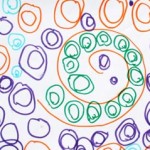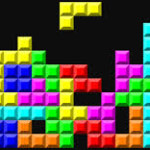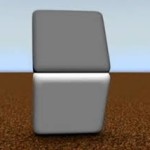“Perfect Circles: Why We Can Spot Them, But Can’t Draw Them” by Rachel Nuwer
Article featured in BrainDecoder
“(…) Most people can quickly pick out an imperfect circle, but the ability to draw a perfect one freehanded seems to elude all but the legendary Giotto and similarly accomplished masters. This is because the seemingly complimentary tasks of recognizing imperfection and then correcting it to produce perfection actually have little to do with each other—at least so far as our brains are concerned. While the visual cortex handles image processing involved in detecting off-kilter spheres, completely different parts of the brain responsible for coordination and fine muscle control, combined with the complexity of the arm’s structure, are to blame for our inability to draw a perfectly round sphere.Continue reading→
“The free-will scale” by Stephen Cave
published on aeon
“It is often thought that science has shown that there is no such thing as free will. If all things are bound by the same impersonal cosmic laws, then (the story goes) our paths are no freer than those of rocks tumbling down a hill. But this is wrong. (…) Instead of using an electron microscope or a brain-scanner, we should go to the zoo.
(…) animals need to weigh different factors, explore available options, pursue new alternatives when old strategies don’t work. (…) We are complex organisms actively pursuing our interests in a changing environment.
And we are starting to understand the cognitive abilities that underpin this behavioural freedom. Like most evolved capacities, they are a matter of degree. Take, for example, the ability to delay gratification. (…) Experimenters measure this ability by testing how long an animal can resist a small treat in return for a larger reward after a delay. Chickens, for example, can do this for six seconds. (…) A chimpanzee, on the other hand, can wait for a cool two minutes – or even up to eight minutes in some experiments. (…)
(…) The concept lies at the heart of how we see ourselves: assumptions about the extent to which we choose our own fate inform everything from social policy and criminal justice to our personal motivations and sense of life’s meaningfulness. (…)
One prevalent idea is that freedom requires a supernatural ability to transcend the laws of nature, because otherwise we would appear to be mere puppets of cause and effect. This makes free will into something mysterious, which would set us apart from the rest of creation. As this notion contradicts everything we know about the world, it is no surprise that ever more people are concluding that free will must be an illusion.Continue reading→
Evidence of Cortisol effect on dynamic risk aversion
Economists have for some time argued that market models may benefit from assuming dynamic risk aversion. Instead of considering agents react to and perceive risk/reward in a constant way, agents change over time. Attempts followed in trying to model such changes.
A recent study on how cortisol shifts financial risk preferences brings light to a metabolic (partial) explanation for it.Continue reading→
“Most New Psychology Findings Can’t Be Replicated. So Now What?” by SIMON OXENHAM
posted at big think
“The field of psychology has been shaken by a massive replication effort, which has found that out of 98 papers published in the top three psychology journals only 39 could be replicated.
(…) Whenever you hear the words “new study,” alarm bells should ring. It isn’t new studies that you should base your opinions on; it is old studies that have been replicated again and again, and the results reported in meta-analyses and systematic reviews.
(…) we have every indication to believe that new research is similarly difficult to replicate across many areas of science. For example, 30 percent of the most widely cited randomized controlled trials in the world’s highest-quality medical journals have later been found to be wrong or exaggerated and that number rises to five out of six for non-randomized trials — a number that is in fact worse than the rate found by the psychology reproducibility project.
(…) The solution is to take a skeptical approach to the world around us, to treat every new claim not as a problem solved, but as an open question.Continue reading→
“20 Years Later, the Tetris Effect Has Turned Life into One Big Video Game” by Megan Gannon
“Some people credit Neil Gaiman with first describing the Tetris effect in a 1987 poem “Virus in digital dreams,” but the expression is usually traced back to a 1994 Wired article (…)
Over the last two decades, the Tetris effect has worked its way into gaming vernacular, but considering how many people play video games, it may be surprising how little the phenomenon has been studied.
(…) Perhaps the most famous example is a 2000 study by Harvard psychiatrist Robert Stickgold. (…) As Stickgold told Australia’s ABC News in an interview, this made him think there must be something going on in the brain that is producing these intrusive images. (…)
He found that students who were made to play Tetris reported, quite consistently, that they saw Tetris pieces floating down in front of their eyes as they were going to sleep. Stickgold also included five amnesiacs in the experiment who could play Tetris just fine, but due to a specific brain damage, couldn’t later recall playing it. But they, too, said that they saw blocks floating or turning on their side—even though they couldn’t explain the origin of those shapes. One patient, for example, reported seeing “images that are turned on their side. I don’t know what they are from. I wish I could remember, but they are like blocks.”
Your brain during orgasm – and how it relates to performance anxiety, by Max Plenke
Article by Max Plenke, featured in .Mic
“You are your own worst enemy in the bedroom. (…) You can’t shut off a certain part of your brain. (…)
To understand performance anxiety, you first have to understand what orgasms do to the body — and why reaching them is so easy when we’re alone, but often harder with a partner.
When you orgasm, it takes near-total control of your brain and nervous system (…) from head to toe.
(…) activation in the nucleus accumbens, the pleasure center of the brain, [and] the hypothalamus, which excretes oxytocin,(…) in the cerebellum, which is involved in muscle tension; we see activation in the insular and cingulate cortex, which are interesting because those same areas react to pain, so it may be inhibiting pain in its processes; we see activation in the amygdala, which increases heart rate and blood pressure and sweating. They’re all activated, and they’re all activated maximally.”Continue reading→
RSK white paper- Rootstock Bitcoin powered Smart Contracts platform
Rootstock (RSK) – Bitcoin powered Smart Contracts
“…Rootstock (RSK), a smart-contract platform that incorporates a Turing Complete Virtual Machine to Bitcoin. It also provides other enhancement to the network such as faster transactions and better scalability, features that we also believe will enable new usage scenarios.Continue reading→
Apes’s visual illusions
Audrey E. Parrish, Sarah F. Brosnan, and Michael J. Beran published a comparative investigation of the Delboeuf illusion in humans and a couple of monkeys species. Theis research bring evidence of relative size perception illusion across those species.
Parrish and Beran’s previous research on how both humans and chimpanzees misperceive food amounts based on plate size target a similar topic.
Interestingly, in the case of the chimpanzees studies it was possible to observe not only a visual illusion. Feeding and consumption behavior changed accordingly as well. It is not out of the ballpark to characterize greed and accumulation in excess resulting in illusory perception. Perhaps understanding better the foundation of such illusions help humans distancing our behaviour in a more conscious fashion.
3D qualitative spatial representation
Alex Burmester’s article on How do our brains reconstruct the visual world provides a short introduction of brain perception process. Selective processes, visual attention, and inattentional blindness are key to understand how our mind build an schematic version of the environment as images in our minds.
Taking a more conceptual – and from an opposite side – tackle into the problem is the paper by Till Mossakowski and Reinhard Moratz on Relations Between Spatial Calculi
About Directions and Orientations. They describe how relation algebras help us understand the transition from qualitative approaches of the environment to relative direction.
Linking the two is the effort to understand how we see. Our brain combines each eye receives a limited, partially colourless signals at the retina into a seemingly continuous 3D experience. Something that is very handy, to say the least.
This would not be possible if brains were not trained to continuously construct this environment. There is much to learn from this process about our subjective stance towards objects and our consciousness.







